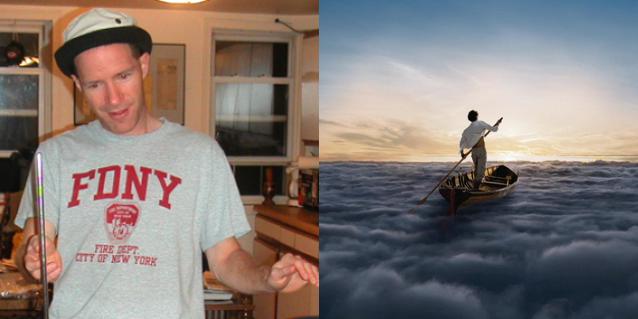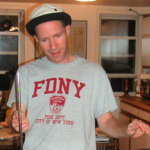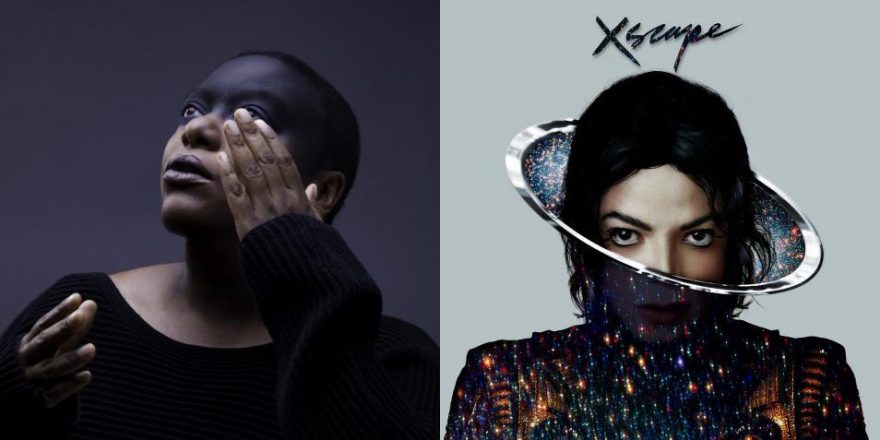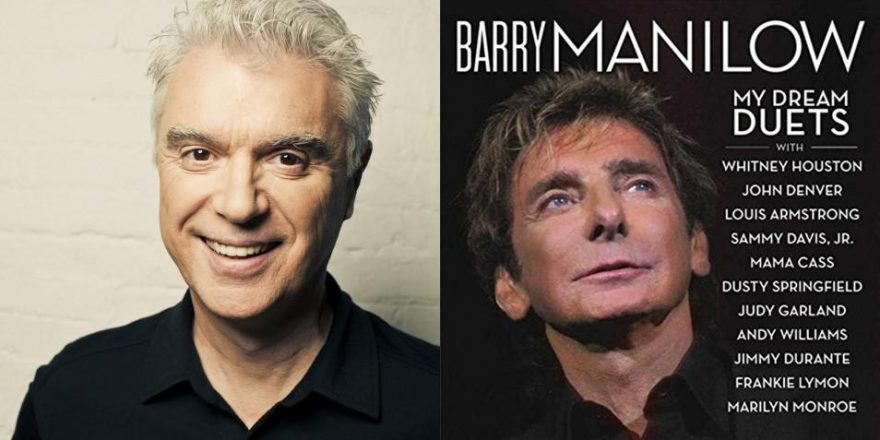For the purposes of the remarks that follow we hold the following truths to be self-evident: that in the period following Syd Barrett’s retirement from Pink Floyd, the band made exactly two great albums, The Dark Side of the Moon (1973) and Wish You Were Here (1975). There were a few tantalizing false suggestions of greatness before these two albums, moments on A Saucerful of Secrets (1968) like “Set the Controls for the Heart of the Sun,” some of Atom Heart Mother (1970), even though the band was uncharitable about it later, “Careful with That Axe, Eugene,” on Ummagumma (1969), “Echoes” on Meddle (1971), but these were less numerous than was believed at the time.
The Dark Side of the Moon, had you not heard it on the radio and in the dorm rooms of certain cannabis-afflicted college acquaintances 100,000,000,000 times by now, would still sound pretty great. Were you able to hear it as it sounded in 1973, you would recognize anew that it is a substantial, ambitious, dramatic and uncompromising suite of songs, with a big, sad molten core that has to do with madness — with Syd Barrett’s madness, let’s say — and the desperation that circumambulates around such illness. Wish You Were Here is also very strong for most of its course, especially the title track, and “Shine On You Crazy Diamond,” whose themes are similar to those of The Dark Side of the Moon. There is some noodling on Wish You Were Here, but there is also urgent, unsettling songwriting and longing, loss, uncertainty.
After Wish You Were Here, everything released by Pink Floyd is, to one degree or another, unlistenable. There are passages in Animals (1977) that fleetingly recall what came before, but Animals is also bursting with ego, with the idea that every negative lyrical perception, every little secretion of dyspepsia, is worthy of inclusion simply by virtue of its unpleasantness. The same is true, only more so, of The Wall (1979), which, at this remove, sounds a lot like windbaggery, with its whinging about success, except for “Comfortably Numb” and its shimmery string arrangement, which is apparently the only thing on the album that David Gilmour was permitted to collaborate on.
After The Wall, there is not much to talk about. Roger Waters’ solo albums are abominations, admixtures of truly inferior songwriting and conceptual bloat, while David Gilmour’s version of Pink Floyd is too conservative to compose much music of interest. Above all, with Gilmour there is the problem of the lyrics. This was first evident on the eponymous David Gilmour solo album from 1978. His second album, About Face (1984), farmed out some of the lyric writing to the not-beyond-reproach lyricist Pete Townshend, and the third album, On an Island (2006), not markedly different in sound from the post-Waters Pink Floyd albums, employs Gilmour’s wife, Polly Samson, for the words. The guy just has a shortage of things to say.
If it’s true that post-Wall Gilmour and Waters are both hard to like, then what characterizes the period in which Pink Floyd was capable of making great albums? Albums that are still played with remarkable avidity 40 years later.
One thing that is good about those two albums is Nick Mason. The Nick Mason drum sound is instantly recognizable, and so out of phase with the preferred heavy drum sound of most rock & roll from the classic-rock period. Nick Mason is the anti-Bonham. He has a very gentle snare sound, a lovely ride cymbal tendency, and he avoids big splashy rolls. And because the tempos in Pink Floyd were often slow, he sounds remarkably spare, a little like Levon Helm, a little like Jaki Liebezeit from Can. Mason was also essential to the sound collages on The Dark Side of the Moon; indeed, a lot of the really abstract, experimental Pink Floyd stuff has Mason’s imprint on it. And for my money, whenever Mason is far from his role in the band, the band is off its game. Pink Floyd is supposed to push the envelope towards the abstract — that is part of its constitutional obligation. See “The Grand Vizier’s Garden Party” on Ummagumma for more examples along these lines.
The other secret weapon during the high period of Pink Floyd was the keyboard playing of Rick Wright. Like Mason, Wright was a constant from the earliest iterations of the band, and not only wrote music but sang frequently. His voice, with its chameleonic tendencies (he could sound a great deal like both Syd Barrett and David Gilmour), made him the subtlest kind of frontman during his turns as such. His playing, however, despite the fact that he was never a vainglorious soloist, is essential to both The Dark Side of the Moon and Wish You Were Here.
What’s so good about his playing? The problem with Pink Floyd, at the end of the day, is that Pink Floyd is rhythmically somnolent. It tends to stick with a certain dogged mid-tempo, and to adhere to certain tried-and-true ideas about melodic development. But Wright (and the same is true of Mason) was not a conventional player of rock & roll, and he brought to Dark Side and Wish You Were Here, a little bit of the dreaded jazz. This is the guy who once said that he could make a top-ten favorite albums list that consisted of nothing but Miles Davis. And just as Nick Mason’s lone solo album during the high period of Floyd was basically a Carla Bley vehicle, a jazz album of a kind, so was Wright’s approach to harmony and rhythm frequently besotted with both the modal period of jazz (Kind of Blue, let’s say, or Coltrane’s Impressions), and with the funky syncopations of its electric period (the Mahavishnu Orchestra and Bitches Brew). Listen to those keyboard parts on “Money” and “Shine on You Crazy Diamond” if you need a refresher.
Once Roger Waters commenced with his harshing on Wright (this disagreeable turn of events came to a head during The Wall), in the process diminishing the keyboard player’s opportunities for composition and input, the music of Pink Floyd began to sound, well, very white. Gilmour said as much himself, that the band needed Wright to do what it did best. To be more thorough about it, you might say that the band was actually a band, bigger than its participants, and Wright is the emblem of this. The leadership vacuum that came about after Syd’s mental illness surfaced eventually destroyed this idea that the band was a band. It took a while, six or seven years, but when the dust settled, the band concept in Pink Floyd was vacated, and replaced with its succession of “leaders,” and thus did Pink Floyd become, as Waters said himself, “a spent force.”
The Division Bell (1994), the last “official” Pink Floyd release, rectified some of these problems in that it featured the largest concatenation of Pink Floyd members in one place since The Wall, but, as I say, it still sounded punctilious and commercial in its aspect, as if there was too much on the line, too many hangers-on needing to be paid, for the band to demonstrate the invention that marked Pink Floyd in its furious youth. I tolerated exactly one song on The Division Bell, “Take It Back,” because it had that spooky e-bow sound on it, and a good melody. But it didn’t wear well on me, and nor did the rest of the album. In truth, the only thing by Pink Floyd in this period that I could listen to with any frequency was the “Soundscape” track on Pulse, their 1995 live album. “Soundscape” was included on some deluxe version of Pulse, and it amounted to an ambient experimental piece that the band used to play on tour while people were taking their seats. It was composed by Wright, Gilmour, and Mason, and it has the satisfyingly dashed-off weirdness that we associate with one of Roger Waters’ rashest moments, “Several Species of Small Furry Animals Gathered Together in a Cave and Grooving with a Pict,” also from Ummagumma, or with “Alan’s Psychedelic Breakfast” from Atom Heart Mother. “Soundscape” relies abundantly on the all-important sound-collage work from Nick Mason. “Soundscape” reminds you that Pink Floyd was once a band that began a recording session (Wish You Were Here) by experimenting for an unseemly amount of time with the friction idiophone — music produced by partially filled crystal wine goblets.
How then to greet the news of The Endless River, this compendium of music left over from sessions for The Division Bell?
One greets it first of all with dread, because there is no conclusion but that the last truly great music created by these musicians was 40 years ago, and that the part of their output that is truly singular and arresting came mostly from a songwriter who only lasted three or four years in the band before becoming seriously mentally ill.
One greets The Endless River with dread, too, because of the taxonomical and interpretive difficulties that come with an album recorded 20 years ago, in the form of a bunch of jams, then filled out in subsequent years (since the 2008 death of Richard Wright, let’s say), with additional material — and not only on the “single,” the one song with words (“Louder than Words”), but elsewhere else as well. Is it from then, or is it from now? This is a contemporary puzzle, a recent vexation, made possible by advances in digital recording: the restored song, the “Free as a Bird” idea of constructed songwriting. There are lots of these recordings floating around lately, from Michael Jackson to Queen to Pink Floyd, and each of them is troubling in some unique way.
That being said, if there is one aspect of the David Gilmour-era Pink Floyd that cannot be controverted, it is the band’s tendency to respect materially its constituent players. Gilmour always plays songs by Syd Barrett in his more recent live shows, even though the audience is undoubtedly less familiar with that part of the Floyd repertoire. In the ’90s, he did it just to make sure that Syd, while still living, still got royalty checks (here, for example, is a good live version of “Arnold Layne,” with Gilmour, Wright and David Bowie [!]). After Wright’s death, Gilmour even appeared on Later… with Jools Holland to play one of Wright’s early compositions, “Remember a Day,” which had never been performed live by any member of the band, including Wright himself.
It is this fact, the loyalty of these players, that caused me to harbor feelings of hope, perhaps unwarranted, about The Endless River. The album has an occasion, and that is the occasion of Richard Wright’s passing away (from an undisclosed variety of cancer), and it seems that the idea to restore the sessions and make a suite from them dated from that time. Gilmour and Mason, the only remaining members of Pink Floyd, in this way not only manage to release one more Pink Floyd album, they also ensure that Wright’s estate and his heirs are well looked after. This kind of generosity is in short supply in the music business, and much to be admired.
And the score-settling doesn’t end with the royalties. Richard Wright’s understated and sophisticated presence in the band was only properly reassessed after his death, and The Endless River rectifies this by leaning heavily on Wright’s contributions to the improvisations that resulted in the The Division Bell. The album is long on keyboards. And these keyboards often include the eerie, numinous quality that is Wright’s strongest suit — half the Satie of the Gymnopedies, half Terry Riley.
But the score-settling also has to do with words themselves. If The Division Bell was lyrically preoccupied with the difficulty of communication, it was thus also preoccupied with conventional song structures. There were a couple of instrumentals, but that album was largely concerned with songs. The Endless River is no such thing. It has only the one song at the end, a song (again) about the problem of words themselves. Otherwise it is a sequence of instrumentals in the same way, it seems to me, that “Echoes” is a sequence of instrumentals, in the same way that Ummagumma was largely instrumental, in the same way that “Shine On You Crazy Diamond” is largely instrumental. For some time, Gilmour has been saying that he wanted to restore the balance of music to words on a Pink Floyd release, presumably to rehabilitate the earlier Pink Floyd aesthetic. The Endless River certainly does this.
The first thing you notice, therefore, is that the album sounds exactly like a Pink Floyd album. No Pink Floyd album has sounded this much like Pink Floyd since all four members of the post-Syd Barrett Pink Floyd were playing together. Moreover, it contains (despite what the band has said elsewhere) a little sample of “Soundscape” — the original synthesizer swooshes — and to me that is a good sign, because it means that the rigid hit-single obligations of Gilmour-era Floyd are dispensed with in favor of the abstract legacy of the band, the legacy of spontaneous composition, patient development of ideas, and subtlety (as opposed to the bombast of Animals and The Wall) that marks the best of Pink Floyd.
The opening tracks, which are all about Wright and Gilmour, hover in the area of the ambient (and Nick Mason, when detailing The Big Spliff, the supposed earlier version of the album, used just this word to describe it), with a wealth of the exceedingly spooky Richard Wright, as well as the processed acoustic e-bow playing that Gilmour first explored on The Division Bell. The second of these pieces, “It’s What We Do,” is a dead ringer for “Shine On You Crazy Diamond,” to the point where Wright seems to be leaning on the very same Moog sound that he used for his solo back in the day. If you like that Wish You Were Here sound, and you were wishing anew for an era in which such a thing might happen again, you’re in luck, because apparently the people who made that album are in fact capable of playing exactly that way.
A high point for me on The Endless River, however, is to be found on “Sum” and “Skins,” two somewhat experimental pieces that are trance-oriented and more redolent of the aforementioned Spliff than “It’s What We Do.” The latter of the two involves an unabashed percussion workout from Nick Mason, something he hasn’t given us in perhaps three decades. In the middle of the album, meanwhile, a kind of formula begins to take hold: Wright’s pieces are more abstract (it’s fair to say they rely on certain remarkably dated keyboard sounds, like the synthetic piano sound on “On Noodle Street,” whose title accurately reflects some of the aesthetic here), while Gilmour’s are more band-oriented and conventional, especially on his very rock-oriented “Allons-y,” much reminiscent of “Run Like Hell” from The Wall. And yet, “Allons-y” is broken in half and interrupted by a pipe organ improvisation from Richard Wright, circa 1968. How excellent that the thematic coherence of the Division Bell sessions can include a pipe organ recording from 46 years ago.
The last “side” of the album is all Gilmour, really, with the familiar blues soloing, that particular note-bending that we know so well. And I for one could easily have a less-is-more feeling about these tracks, though I understand this soloist is Pink Floyd for a lot of people. In due course, Gilmour the blues maestro yields to “Louder than Words,” the single. Now, many people have already said that The Endless River is an insufficient ending, a whimper rather than a bang, but that is to make a fundamental listening mistake: to listen to this album only as though it were a Pink Floyd album from 1975. But it is more than that, if only because history never permits the exact replica. If you can avoid this fundamental listening mistake, the expectation of the exact replica, then you can come to “Louder than Words” at the album’s close and hear it as the work of group of musicians who played together for 40 years talking about how the band is more important than the people in it, and more important than their ability to reach one another personally. The words here are less relevant than the substance of the words, and so I’m not going to quote from them at length, as I might otherwise do, because in the end it’s sometimes the music without the words that does the emotional heavy lifting.
If the song called “Wish You Were Here” was a rather profound recognition of a fellow musician from the period after his absence, then “Louder than Words” is definitely the work of the same band, in that it, too, is about the unspoken things that happen in the band setting. It’s about the things that happen with the musical instruments that tell us more about the human heart than all the verbiage that can be brought to bear on any subject. On that basis, it is not hard to find “Louder than Words” moving, despite the bad digital piano sound, or the end rhyme of “fire” with “desire.” It demonstrates its subject, as indeed does the entirety of The Endless River.
There is probably not going to be any more new Pink Floyd music, and in truth there hasn’t been any in quite a long time (I remind you, however, of the Live 8 performance, which is moving), but this album, for all its flaws, is a Pink Floyd album by the vast majority of the people who made the two great post-Syd Barrett Pink Floyd albums, who knew exactly what they were doing when they made the original Pink Floyd music, and who united (in this case, as opposed to the album appropriately entitled The Division Bell), to make a new album in that same spirit, the spirit of exploration, abstraction, melancholy, foreboding and groove.
When the dust settles, this will not have been the best Pink Floyd album, it will be the album made by men in their fifties and sixties reflecting on the improbable greatness of two records they made when they were musicians in their late twenties. And when you’re in your twenties it’s easier to make records about horror, madness and hypocrisy. In your sixties, you are more likely to make art about how lucky you are still to be here at all. The Endless River abounds with this middle-aged wisdom, especially in view of the fact that it was finished after one of these musicians was no longer present to aid in its completion. The Endless River, therefore, is an act of love and remembrance, filled with gentle warmth and bittersweet recollection. On that basis, there is a lot to admire about it.









